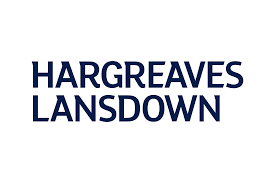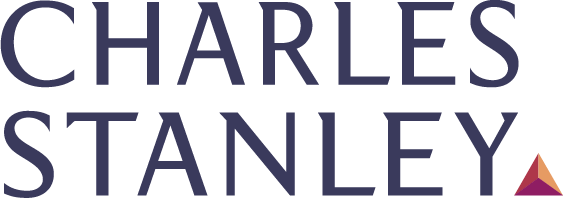We all know about the importance of saving towards your retirement. But how are your pension contributions taxed and when? Here’s a quick guide to help you understand how private pension savings are taxed.
Maximise your retirement fund with our panel of pension providers. Click on your chosen provider to get started!
Do You Pay Tax on Your Pension Contributions?
Your private pension contributions are tax-free but only up to a specific limit. Your tax-free contributions come with three limiting conditions, which we explore below.
Tax Relief on Pension Contributions
You are entitled to receive tax relief on private pension contributions up to 100% of your annual earnings.
If you earn £20,000 in a single year, then you can put £20,000 towards your pension pot tax-free. On the other hand, if you put £25,000 towards your pension, then your tax relief only applies to the £20,000.
Tax relief is typically relief at source, meaning you don’t need claim tax relief separately. Relief at source applies to all personal and stakeholder pensions and many workplace pensions. You have to agree to certain conditions before paying into a private scheme and provide your pension provider information, including:
- Your full name and address.
- Your date of birth.
- Your National Insurance number.
- Your employment status.
Annual Allowance
There is a limit to your tax relief in the form of Annual Allowance. Your annual allowance is what you can save in your pension pot in a single tax year. If you go above your yearly allowance rate, you’ll pay tax on the rest. All your pension contributions count towards the allowance.
The annual allowance is currently £40,000.
If you earn £60,000 in a year and you wish to put the same amount into your pension pot, you will only receive tax relief on the £40,000.
The allowance can be lower in situations where you have a flexibly accessed pension pot, or you earn a high income. Your threshold income would be over £200,000 and adjusted income over £240,000 for your income to be considered high. Flexibly accessing your pension means taking:
- Cash or a short-term annuity from a flexi-access drawdown fund.
- Cash from a pension pot.
You can carry over any annual allowance you don’t use for the next year and can do so for the previous three tax years.
Lifetime Allowance
You’ll also need to pay tax if your pension contributions are worth more than your Lifetime Allowance. The allowance is currently £1,073,100, which reduced from £1,250,000 in April 2016.
It is possible to protect your lifetime allowance from the reduction by contacting your pension provider.
If you go above the lifetime allowance, you’ll have to pay tax on the rest.
Not All Pension Contributions Are Equal
You might need to pay tax on your private pension contributions in certain situations. Your contributions might not be eligible for the above relief if your pension provider:
- Is not registered for tax relief with HMRC.
- Doesn’t invest your pension according to HMRC’s rules.
You should always check your pension scheme is registered with HMRC to ensure you qualify for tax relief. You can find more information on how to do this on the Government website.
You should also keep in mind that tax relief is not applicable if you use your pension contributions to pay a personal assurance policy. Personal term assurance policies are life insurance policies that either end when the insured person dies or they insure multiple people from the same family. The exception to this is a protected personal term assurance policy.
Are Pension Contributions Taken Off Before Tax?
You’ll usually get tax relief on private pension contributions automatically. Two conditions lead to automatic tax relief. These are:
- Your employer takes pension contributions out of your pay before deducting Income Tax.
- Your Income Tax Rate is 20%.
You might have to claim tax relief if you pay income tax at a rate above 20% and your pension scheme doesn't qualify for automatic tax relief. You can claim the relief on your Self Assessment tax return.
If you don’t pay income tax, you can still get tax relief at 20% on the first £2,880 you pay into your pension in each tax year. HMRC automatically applies this relief, or your pension provider claims tax relief at source. Low income here refers to situations where you don't earn enough for the income to be subject to Income Tax, or if you don't work.
As mentioned earlier, you have an annual allowance, and you’ll need to pay tax on pension contributions that go above this. You’ll only need to pay tax on the amount that goes above the limit.
Either you or your pension provider can pay the required tax. Keep in mind that you’ll need to tell HMRC about the tax even if your pension provider pays it. You can inform HMRC about the payments in your Self Assessment tax return.
Keep in mind that you don’t have to pay tax if you go over your annual allowance if you:
- Retired and withdrew your pension pot due to serious ill-health.
- Die during the relevant tax year; your estate will not be charged.
Finally, your pension provider will also let you know if you go above your lifetime allowance. They will deduct the tax from your pension before you start receiving the pension payments. You have to inform HMRC about the tax deducted on your Self Assessment tax return. The tax rate on anything above your lifetime allowance can depend on how you receive your pension. The rate is:
- 55% if you receive the pension as a lump sum.
- 25% if you receive the pension in any other way, such as annuity payments.
Tax When You Get Your Pension
Pension contributions are largely tax-free, and you should start saving as soon as possible. However, you shouldn’t stop thinking about taxes when you finally start receiving your pension payments.
Your State Pension is subject to income tax. You can read more about how you pay tax on your state pension in our previous guide.
You can withdraw up to 25% of your private pension pot tax-free. You can use the remaining amount to provide an income or withdraw it altogether. In both instances, you’ll pay tax on it. However, you can earn up to £12,500 tax-free in the 2020/21 tax year. This is called the Personal Allowance, and it can change from tax year to tax year. The allowance limits for the upcoming tax year are announced annually in the Budget.
You should also keep in mind the Personal Savings Allowance. Introduced in 2016, the allowance is the amount of savings income you can receive tax-free. For 2020/21, the sum is £1,000 for basic rate taxpayers and £500 for higher rate taxpayers. If your savings income is above these sums, HMRC will collect any tax due through your PAYE code. In case you declare your savings income through a Self Assessment tax return, you will use the form as usual.
If your overall income is less than the Personal Allowance, you’re entitled to a £5,000 starting rate of 0% for savings on top of the £1,000.







